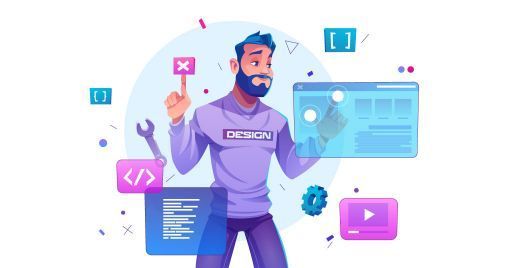
The Importance of Progressive Disclosure in Web Design

From Simple to Complex: Progressive Disclosure Strategies for Enhancing the Usability of Web Platforms.
Modern apps and websites are becoming increasingly complex. As we add more content and features, interfaces become more complicated, requiring users to put in more effort to interact with our content.
To simplify the user experience, it becomes useful to expose content progressively, step by step, employing the principles of Progressive Disclosure.
In a system designed with Progressive Disclosure techniques, what appears immediately on the screen communicates to users what is important and helps direct their attention to features that will likely be useful, resulting in significant time savings.
In this article, we will delve into the importance of Progressive Disclosure in Web Design, examining how this technique can revolutionize the way users interact with web platforms.
What is Progressive Disclosure?
Progressive Disclosure is a design strategy aimed at simplifying the user experience by gradually and controlledly revealing information. Introduced by John M. Carroll and Mary Rosson at IBM in 1983, this methodology was conceived to mitigate visual complexity and cognitive overload within user interfaces.
Advantages of Progressive Disclosure in Web Design
Enhances Usability
Progressive Disclosure reduces user overload by presenting only essential information initially, facilitating navigation, and improving the overall usability of the platform.
Increases Engagement
With the gradual presentation of content, users are more likely to stay longer on the platform, increasing engagement and fostering more active participation in eLearning courses.
Optimizes Loading Time
Accurate implementation of Progressive Disclosure helps optimize site loading time, enhancing the user experience and positively influencing search engine rankings.
Practical implementation of Progressive Disclosure in Web Interfaces
To successfully implement Progressive Disclosure in the user interface, practical tools guiding the user through a gradual progression of information are necessary.
Here are some tools and practical approaches related to content consumption needs:
Need: Avoid long lists of links. Ensure clear and intuitive navigation.
Solution: Mega Menus or Dropdown Menus hide less relevant information until the user requests it, improving site usability. These menus represent an effective alternative for presenting a wide range of information in an intuitive manner.
Need: Hide complex information and show it only on demand. Avoid visually overwhelming the page.
Solution: Tooltips provide additional information when the user hovers over a specific element. Overlays and Popovers are windows that appear on user click, showing additional details or options without changing the page. The use of tooltips, overlays, and popovers provides additional information without having to change the page, maintaining a clean and organized interface, reducing the initial information load, and ensuring quick accessibility to information.
Need: Reduce visual complexity and information overload. Provide a sense of progression and structure. Focus user attention.
Solution: The progress bar is an advancement bar that can be used to indicate progression through a sequence of steps or modules. Accordions are interactive elements that allow showing or hiding sections of content. Both of these solutions enable the creation of a more intuitive and manageable user experience, especially when presenting information hierarchically and gradually, guiding the user through the information step by step.
Need: Manage a large amount of information without visually overloading the interface.
Solution: Dividing content across multiple pages through pagination or using infinite scroll to progressively load content as the user scrolls down is an excellent practical solution for managing large amounts of content. Additionally, the use of tabs allows switching between different pieces of information within a confined space.
Need: Reduce the perception of complexity in direct information collection.
Solution: Online forms and surveys structure questions gradually, presenting subsequent information only after the user has answered the previous ones.
Need: Show only relevant features for that specific user at a given time.
Solution: Develop interface customization based on Roles or Profiles. This strategy involves selectively presenting information and features based on the user's context or responsibilities (e.g., user roles, skill sets, industry sectors, or user preferences).
Did you like this article? Sign up for the newsletter and receive weekly news!
Subscribe to NewsletterComments:
No comments are in yet. You be the first to comment on this article!